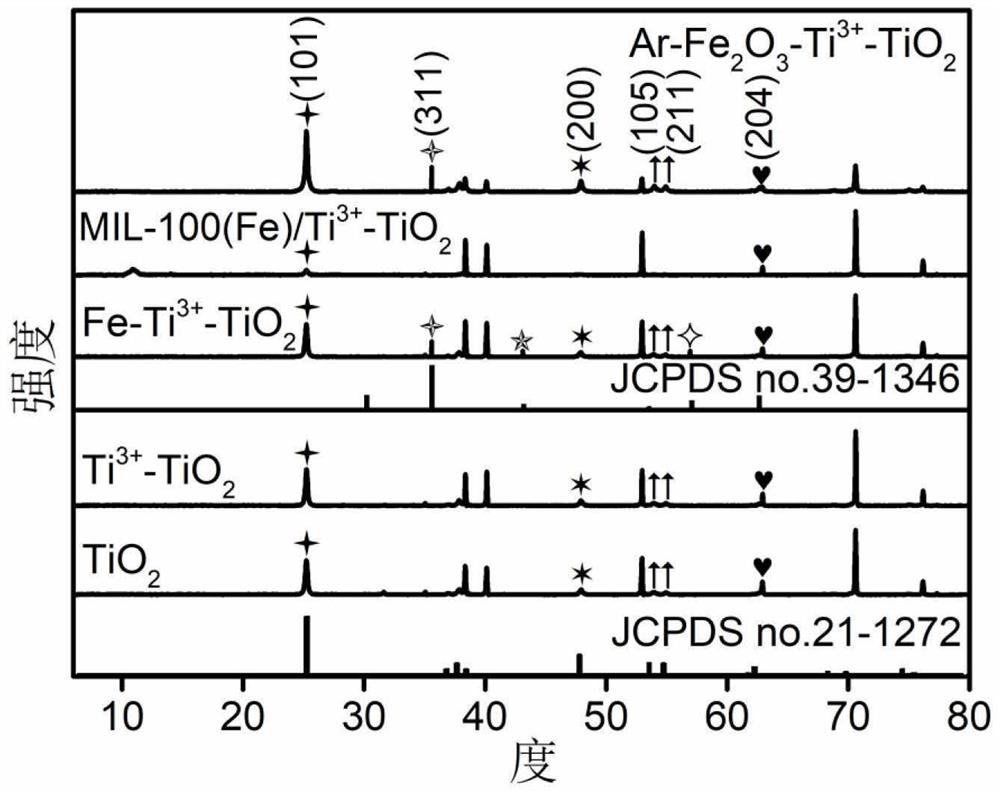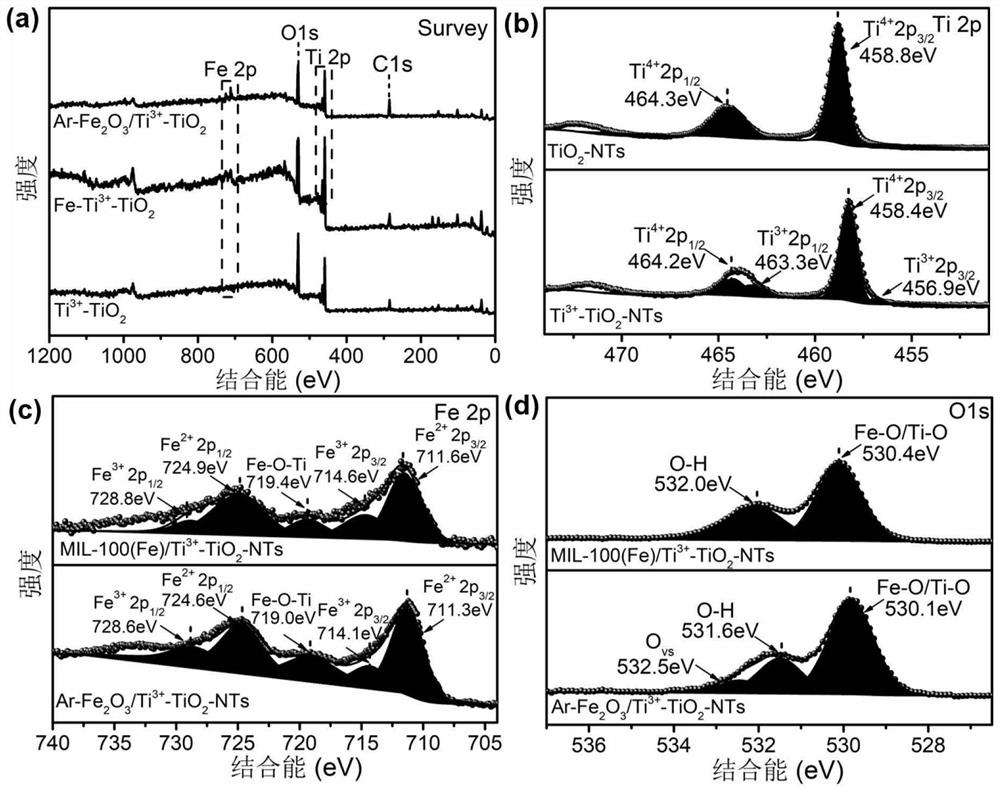Method for treating antibiotic wastewater by utilizing visible-light response semiconductor heterojunction hybrid photoelectric catalytic material electrode
A technology of antibiotic wastewater and photoelectric catalysis, applied in chemical instruments and methods, water treatment of special compounds, light water/sewage treatment, etc., can solve the problems of limiting photoelectrode visible light response, charge separation, low dispersion, etc., and achieve high use Value and application prospect, improvement of dispersibility, effect of improvement of degradation efficiency
- Summary
- Abstract
- Description
- Claims
- Application Information
AI Technical Summary
Problems solved by technology
Method used
Image
Examples
Embodiment 1
[0045] A method for treating antibiotic wastewater by using a visible-light-responsive semiconductor heterojunction hybrid photocatalytic material electrode, specifically, using a visible-light-responsive semiconductor heterojunction hybrid photocatalytic material electrode as an anode to treat tetracycline in wastewater through photocatalytic reaction, Include the following steps:
[0046] With material electrode (TiO 2 -NTs, Ti 3+ -TiO 2 -NTs, Fe-Ti 3+ -TiO 2 -NTs, MIL-100(Fe) / Ti 3+ -TiO 2 -NTs, Ar-Fe 2 o 3 / Ti 3+ -TiO 2 -NTs) as anode, platinum plate electrode as counter electrode, Ag / AgCl electrode as reference electrode, put into 60mL tetracycline waste water containing sodium sulfate (the concentration of sodium sulfate in this waste water is 25mmol / L, the concentration of tetracycline is 20mg / L , pH=5.3) for 90 minutes, wherein the photocatalytic reaction was carried out under a visible light source with a voltage of 2.0V, and the treatment of tetracycline was c...
Embodiment 2
[0080] A method for treating antibiotic wastewater by using a visible-light-responsive semiconductor heterojunction hybrid photocatalytic material electrode, specifically, using a visible-light-responsive semiconductor heterojunction hybrid photocatalytic material electrode as an anode to treat tetracycline in wastewater through photocatalytic reaction, Include the following steps:
[0081] Response semiconductor heterojunction hybrid photocatalytic material electrode (Ar-Fe 2 o 3 / Ti 3+ -TiO 2 -NTs) as anode, platinum sheet as counter electrode, Ag / AgCl electrode as reference electrode, put into 60mL tetracycline wastewater containing sodium sulfate (the concentration of sodium sulfate in this wastewater is 0.5mol / L, and the concentration of tetracycline is 20mg / L , pH=5.3), the photoelectric catalytic reaction was carried out under different conditions to complete the treatment of tetracycline.
[0082] Condition 1: Apply visible light source and 2V voltage for 1.5h.
...
Embodiment 3
[0090] A method for treating antibiotic wastewater by using a visible-light-responsive semiconductor heterojunction hybrid photocatalytic material electrode, specifically, using a visible-light-responsive semiconductor heterojunction hybrid photocatalytic material electrode as an anode to treat tetracycline in wastewater through photocatalytic reaction, Include the following steps:
[0091] Responsive semiconductor heterojunction hybrid photoelectrocatalytic material electrode (Ar-Fe 2 o 3 / Ti 3+ -TiO 2 -NTs) as anode, platinum sheet as counter electrode, Ag / AgCl electrode as reference electrode, put into 60mL tetracycline wastewater containing sodium sulfate (the concentration of sodium sulfate in this wastewater is 0.5mol / L, and the concentration of tetracycline is 20mg / L , pH=5.3), the photocatalytic reaction was carried out at voltages of 1.5V, 2.0V, and 2.5V for 1.5h, wherein the photocatalytic reaction was carried out under a visible light source to complete the treat...
PUM
 Login to View More
Login to View More Abstract
Description
Claims
Application Information
 Login to View More
Login to View More - R&D
- Intellectual Property
- Life Sciences
- Materials
- Tech Scout
- Unparalleled Data Quality
- Higher Quality Content
- 60% Fewer Hallucinations
Browse by: Latest US Patents, China's latest patents, Technical Efficacy Thesaurus, Application Domain, Technology Topic, Popular Technical Reports.
© 2025 PatSnap. All rights reserved.Legal|Privacy policy|Modern Slavery Act Transparency Statement|Sitemap|About US| Contact US: help@patsnap.com



